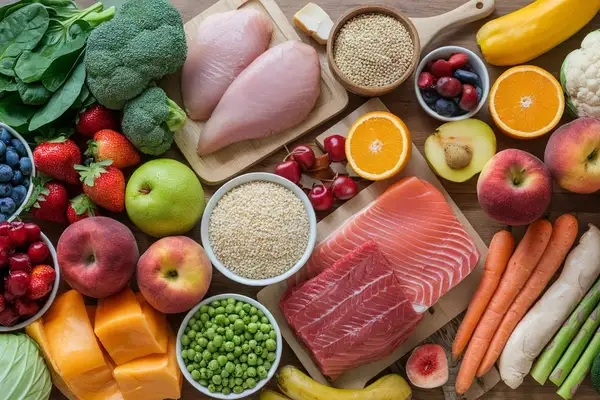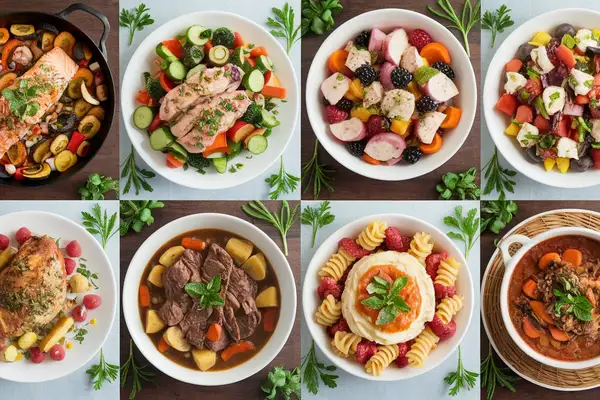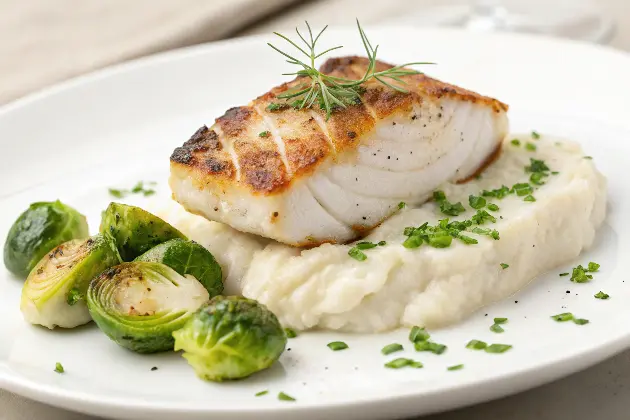7-Day Blue Zone Diet Plan: Embrace Longevity and Vitality
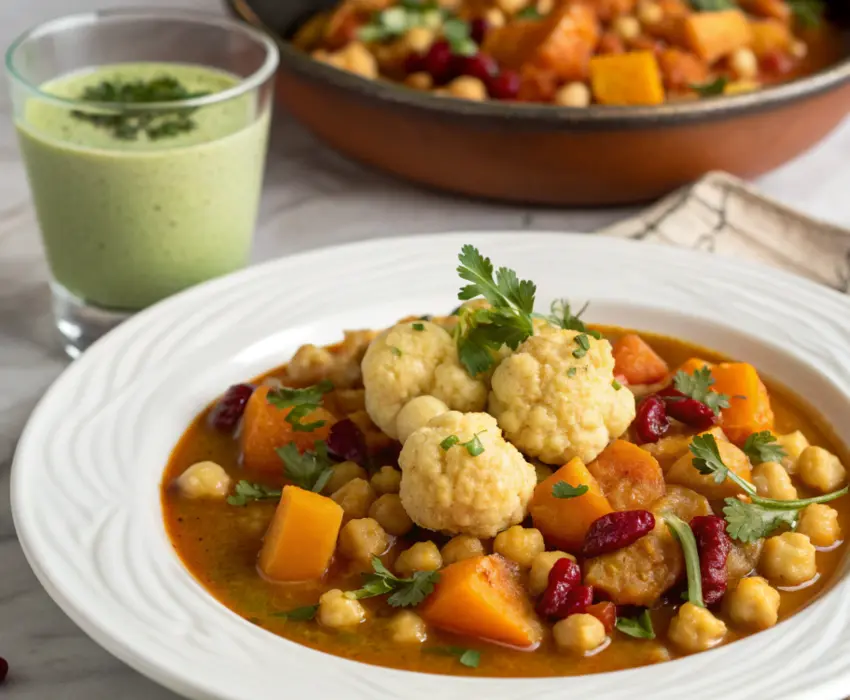
What is the Blue Zone Diet?
This post may contain affiliate links, meaning I may earn a commission if you make a purchase, at no extra cost to you. I only recommend products I trust. Thank you for your support.
The Blue Zone diet is a primarily plant-based eating pattern inspired by the diets of the world’s five longevity hotspots (Blue Zones).
The Blue Zone diet emphasizes whole foods like beans, whole grains, legumes, vegetables, fruits, and nuts, with minimal meat and processed foods, to promote longevity and reduce chronic disease risk.
Blue zones are regions where people live significantly longer, healthier lives due to lifestyle, diet, and social factors.
In these regions, reaching 100 years isn’t a miracle, it’s actually very common.
The 5 Blue Zones
Before diving into your 7-day blue zone diet plan, it’s helpful to know about the regions that inspired it.
The original research identified five key Blue Zones:
- Okinawa, Japan
- Sardinia, Italy
- Nicoya Peninsula, Costa Rica
- Ikaria, Greece
- Loma Linda, California, USA
Blue Zone Foods: The Blue Zone Diet Food List
The Blue Zone diet is inspired by mainly the plant based eating habits of the world’s longest-lived communities.
Below, we break down the key components of what people in the blue zones mainly eat:
1. Whole Grains
Whole grains are a staple in Blue Zones. They provide a steady source of energy, fiber, and essential nutrients without the blood-sugar spikes common with refined grains.
- Brown rice
- Quinoa
- Barley
- Oats
- Whole-wheat products
2. Legumes and Pulses
Legumes are prized for their high protein and fiber content, and they’re a major component of Blue Zone meals.
- Beans (black, kidney, pinto)
- Lentils
- Chickpeas
- Peas
3. Fresh Fruits and Vegetables
A diet rich in colorful fruits and vegetables is a hallmark of Blue Zone eating. These foods are packed with vitamins, minerals, antioxidants, and fiber.
- Leafy greens (spinach, kale)
- Cruciferous vegetables (broccoli, cauliflower)
- Root vegetables
- Tomatoes
- Carrots
- Berries (blueberries, strawberries)
4. Nuts and Seeds
Nuts and seeds offer healthy fats, protein, and a satisfying crunch that helps keep hunger at bay.
- Almonds
- Walnuts
- Chia seeds
- Flaxseeds
- Sunflower seeds
- Pistachios
5. Healthy Fats
Not all fats are created equal. The Blue Zone diet emphasizes unsaturated fats that support overall well-being.
- Olive oil
- Avocado
- Fatty fish for those who include seafood (in moderation)
6. Fermented Foods
Fermented foods support a healthy gut microbiome, a key element in overall wellness and longevity.
- Miso
- Kimchi
- Sauerkraut
- Yogurt (unsweetened or lightly sweetened)
- Kefir
7. Herbs and Spices
The use of herbs and spices not only enriches flavor but also offers powerful health benefits due to their antioxidant and anti-inflammatory properties.
- Garlic
- Turmeric
- Ginger
- Rosemary
- Basil
- Thyme
8. Beverages
Staying hydrated is essential, and the Blue Zone approach includes mindful beverage choices.
- Water
- Herbal teas
- Moderate coffee, and occasionally
- A small glass of red wine
Foods to Avoid or Limit on the Blue Zone Diet
While Blue Zone diets are generous with whole, natural foods, they also emphasize reducing or eliminating certain foods that may contribute to chronic diseases.
Here’s what to keep in mind:
1. Processed Foods
Highly processed foods often contain additives, preservatives, and excess sodium that can contribute to inflammation and other health issues.
- Packaged snacks
- Processed meats
- Ready-made frozen meals
- Fast food
2. Refined Carbohydrates
Refined carbohydrates have been stripped of their natural fiber and nutrients, leading to rapid spikes in blood sugar.
- White bread
- White rice
- Most pastries or sweets made with white flour
3. Added Sugars
Excessive consumption of added sugars can lead to inflammation, obesity, and an increased risk of chronic diseases.
- Sodas
- Sugary drinks
- Candy
- Commercially baked foods
- Sweetened cereals
4. Excessive Red and Processed Meats
Though some Blue Zones include small amounts of animal protein but high consumption of red and processed meats is generally avoided.
- Bacon
- Sausages
- Hot dogs
- Large servings of red meat
5. Trans Fats and Unhealthy Oils
Trans fats, often found in fried and baked goods, are particularly harmful to heart health.
- Margarine
- Shortening
6. Artificial Additives and Preservatives
Artificial ingredients can affect gut health and contribute to inflammation over time.
- Food colorings
- Flavor enhancers
- Chemical preservatives commonly found in processed foods
7. Excess Alcohol
While moderate alcohol, especially red wine, is part of some Blue Zone diets, excessive drinking is harmful.
- High amounts of any alcoholic beverage beyond moderate consumption guidelines
7-Day Blue Zone Diet Plan
This blue zone diet plan emphasizes a plant-based approach, featuring nutrient-dense blue zone foods that are high in protein, vitamins, and rich in whole carbohydrates, exactly the foods enjoyed by the world’s longest-lived communities.
This blue zone meal plan provides healthy blue zone meals for breakfast, lunch, dinner, and snacks throughout the week, making it easy for you to kick-start your journey toward a healthier and longer life.

Day 1
Breakfast:
- Black Bean Breakfast Burritos: Two whole wheat tortillas filled with 1/2 cup black beans, scrambled tofu (or eggs), diced bell peppers, and a spoonful of salsa. (2 burritos, 1/2 cup beans each, 1/2 cup tofu scramble per burrito)
Lunch:
- Paella with Chickpeas, Green Beans, and Shishito Peppers: A vibrant paella-style dish with 1 cup mixed vegetables, chickpeas, and a medley of green beans and shishito peppers. (1 serving)
Dinner:
- Teriyaki Tofu Don: Grilled 6‑oz tofu cubes served over 1 cup steamed rice with a side of steamed broccoli, drizzled with homemade teriyaki sauce. (6 oz tofu, 1 cup rice, 1 cup broccoli)
- Broccoli and Cashew Cream Soup: A velvety soup blending broccoli with a cashew cream base, seasoned to perfection. (1 bowl serving: approx. 1 cup)
Snacks:
- Roasted Beet Hummus with Veggie Sticks: 1/4 cup roasted beet hummus served with sliced cucumbers and bell peppers. (1/4 cup hummus, 1/2 cucumber, 1 bell pepper)
- Watermelon Cake: 1 slice of chilled watermelon cake for a sweet, hydrating treat.
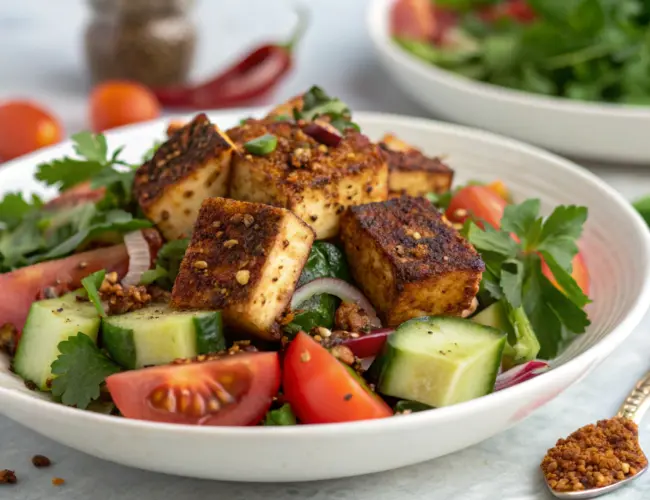
Day 2
Breakfast:
- Strawberry Lemonade Breakfast Soft-Serve: A refreshing bowl of blended frozen strawberries with lemon zest and a touch of natural sweetener. (1 bowl serving)
Lunch:
- Za’atar and Sumac-Roasted Tofu Salad: 6 oz roasted tofu seasoned with za’atar and sumac atop a bed of mixed greens, cherry tomatoes, and cucumbers with lemon vinaigrette. (6 oz tofu, 3 cups greens, 1/2 cup tomatoes, 1/2 cup cucumbers)
Dinner:
- Chickpea Stew with Honey-Roasted Cauliflower & Root Vegetables: A hearty bowl combining 1 cup chickpeas, 1 cup roasted cauliflower, carrots, and parsnips drizzled with a light honey glaze. (1 bowl serving)
Snacks:
- Simple Greek Bruschetta: Two slices of whole-grain toast topped with diced tomatoes, a sprinkle of feta, and fresh basil. (2 slices)
- Herbal Iced Tea with Fresh Peaches: 1 chilled glass featuring brewed herbal tea and slices of fresh peach.
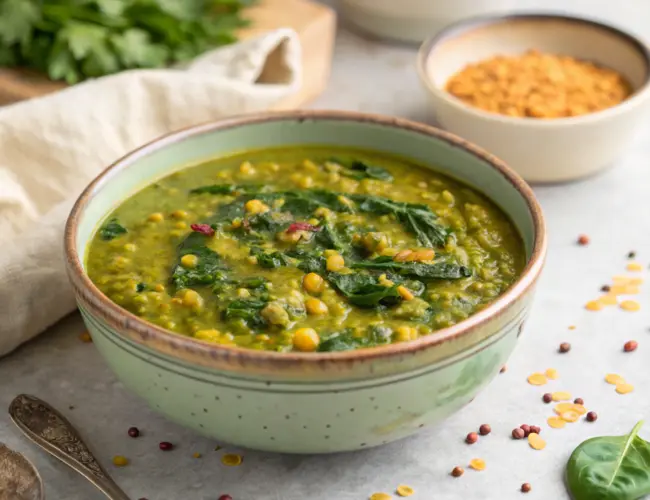
Day 3
Breakfast:
- Matcha Custard With Berries: A silky matcha-infused custard topped with a mix of fresh blueberries and raspberries. (1 serving, about 1/2 cup custard with 1/4 cup berries)
Lunch:
- Heirloom Bean Salad with Smoky Sun-Dried Tomato Vinaigrette: A robust bowl of mixed heirloom beans tossed with chopped sun‑dried tomatoes, red onions, and leafy greens in a smoky vinaigrette. (1 bowl serving: approx. 1 cup beans, 1/2 cup greens)
- Dan’s Longevity Dal Palak (Spinach Dal): A spiced dal with spinach served over 1/2 cup brown rice for a protein-rich, comforting dinner. (1 bowl serving)
Dinner:
- Barley Butternut Risotto: Creamy risotto made with pearl barley, roasted butternut squash, and sage. (1 bowl serving: 1/2 cup barley, 1 cup squash cubes)
- Avocado and Tomato Salad: A light salad of avocado and tomato slices with olive oil and lemon juice. (1 bowl serving of 1 avocado, 1 cup tomato slices)
Snacks:
- Kale Pesto with Crackers: 2 tbsp kale pesto served with 5 whole-grain crackers.
- Ginger Lemonade: 1 refreshing glass of lemonade with a hint of ginger. (1 glass)

Day 4
Breakfast:
- Coconut Curry Tofu Breakfast Bowl: A savory bowl featuring 6 oz coconut curry tofu served with 1/2 cup steamed rice and a handful of spinach. (1 bowl serving)
Lunch:
- Mediterranean Grain Bowl: A vibrant bowl featuring 1 cup quinoa, 1/2 cup chickpeas, diced cucumbers, tomatoes, Kalamata olives, and a lemon-herb dressing. (1 bowl serving)
Dinner:
- Whole Grain Pasta with Tomato Basil Sauce: Whole-grain pasta in a vibrant tomato basil sauce garnished with fresh basil. (1 serving approx. 1 cup pasta, 1/2 cup sauce)
- Minestrone with Fennel and Wild Garlic: A hearty vegetable minestrone with assorted beans, pasta, fennel, and wild garlic. (1 large bowl)
Snacks:
- Winter Potato Salad: 1/2 cup of chilled, herb-infused potato salad.
- Vietnamese Summer Rolls: 3 fresh summer rolls loaded with shredded veggies and herbs, served with a light dipping sauce.

Day 5
Breakfast:
- No-Egg Eggnog & Yuca Cakes: Enjoy a glass (about 8 oz) of creamy no-egg eggnog alongside 2 small yuca cakes lightly spiced and toasted. (1 glass eggnog, 2 cakes)
Lunch:
- Falafel Spiced Chickpea Salad: A bowl of mixed greens topped with falafel pieces, roasted chickpeas, diced cucumbers, tomatoes, and drizzled with a tahini dressing. (1 bowl serving: approx. 4 falafel pieces, 1 cup salad)
Dinner:
- Adventist Gumbo: A robust, vegetable-packed gumbo with beans and okra served over 1 cup brown rice. (1 bowl serving)
Snacks:
- Hearts of Palm Ceviche: 1 small bowl of ceviche featuring hearts of palm, tomatoes, onions, and lime juice.
- Pineapple Horchata: 1 chilled glass of a pineapple-infused horchata beverage.
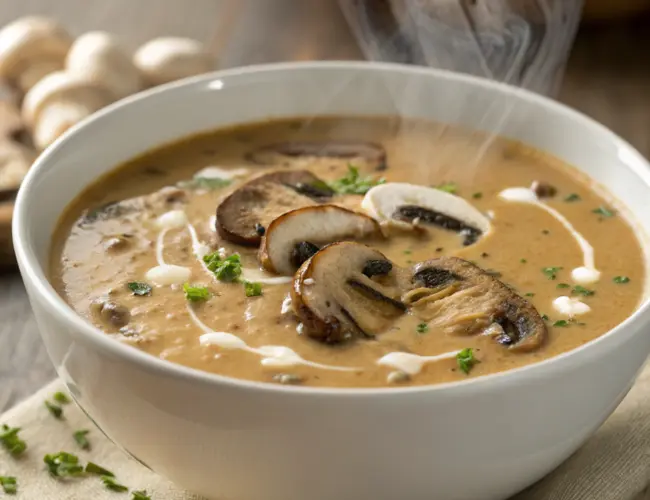
Day 6
Breakfast:
- Green Smoothie: A nutrient-packed blend of spinach, kale, banana, and almond milk. (1 serving approx. 1 cup smoothie)
Lunch:
- Mediterranean Mezze Plate: An assortment of hummus, tabbouleh, olives, fresh vegetables, and whole-grain pita. (1 plate approx. 1/4 cup hummus, 1/2 cup tabbouleh, 6 olives, 1/2 cup assorted vegetables, 1 pita)
- Okinawan Cream of Mushroom Soup: A warm, savory bowl made with assorted mushrooms, a splash of coconut milk, and tender greens. (1 bowl, approx. 1 cup)
Dinner:
- Creamy Pumpkin Marinara Pasta: A comforting dish with whole-grain pasta tossed in a creamy pumpkin marinara sauce enriched with herbs. (1 serving: 1 cup pasta, 1/2 cup sauce)
Snacks:
- Fresh Fig Halves: A naturally sweet snack of fresh fig halves. (1 small bowl: approx. 1/2 cup fig halves)
- Broccoli Peanut Soup: A velvety soup blending broccoli with a hint of peanut butter for richness.
(1 cup serving)
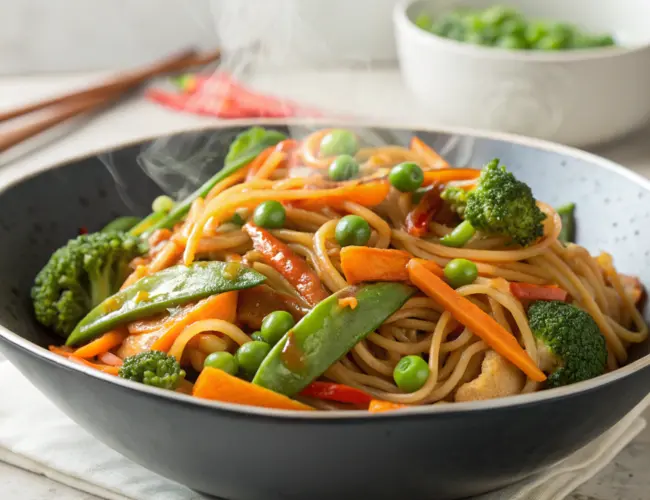
Day 7
Breakfast:
- Black Bean Breakfast Burritos: Two hearty burritos filled with black beans, scrambled tofu (or eggs), and a hint of salsa. (2 burritos)
Lunch:
- Lebanese-Style Lentil Soup with Swiss Chard and Lemon (Adas b Hamod): A tangy, nourishing bowl of lentil soup accented with Swiss chard and a squeeze of fresh lemon. (1 bowl serving: approx. 1 cup)
Dinner:
- Vegetable Lo Mein: Stir-fried whole wheat noodles tossed with mixed vegetables in a light soy-ginger sauce. (1 serving: 1 cup noodles, 1 cup vegetables)
Snacks:
- Citrus Salad: A bright mix of segmented oranges and grapefruits with a sprinkle of mint. (1 small bowl approx. 1 cup)
- Strawberry Mango Salsa with Crackers: 1/4 cup salsa paired with 5 whole-grain crackers.
The Core 9 Principles of Blue Zones
Blue Zone communities show that longevity is not a result of any single factor but rather a result of reshaping your entire lifestyle.
Here are the core principles of blue zones:
1. Move Naturally
In Blue Zones, physical activity isn’t about hitting the gym; it’s built into everyday life.
- People stay active by gardening, walking, and performing daily tasks that keep them moving without structured exercise.
- Natural movement enhances cardiovascular health, strengthens muscles, and supports joint mobility.
2. Purpose
Having a clear sense of purpose, often referred to as “ikigai” in Okinawa, can add years to your life.
- Whether it’s caring for family, contributing to the community, or pursuing a passion, a sense of purpose motivates and energizes.
- A clear purpose has been linked to lower stress levels, improved mental health, and a greater overall satisfaction in life.
3. Stress Reduction (Down Shift)
Managing stress is a critical component of the Blue Zones lifestyle.
- Many Blue Zone communities incorporate regular practices like meditation, prayer, or simply taking time to relax and connect with nature.
- Lower stress levels contribute to reduced inflammation, better heart health, and a lower risk of chronic diseases.
4. 80% Rule (Hara Hachi Bu)
- This principle comes from Okinawa, where people are encouraged to eat until they are 80% full rather than stuffing themselves.Stopping when you’re about 80% full can prevent overeating and aid in weight management.
- This practice can help maintain a healthy metabolism and reduce the risk of obesity-related illnesses.
5. Plant-Slant (Predominantly Plant-Based Diet)
Blue Zone diets are mostly plant-based, emphasizing whole grains, legumes, fruits, and vegetables.
- The focus is on nutrient density rather than calorie counting.
- A diet rich in plant-based foods provides essential vitamins, minerals, fiber, and antioxidants, all of which contribute to a longer, healthier life.
6. Moderate Alcohol Intake (Wine at 5)
Moderate, regular consumption of alcohol, particularly red wine, is common in many Blue Zones.
- Wine is typically enjoyed with friends or family during meals, contributing to social bonding.
- In moderation, red wine’s antioxidants can improve heart health, though it’s important to consume it responsibly.
7. Belonging and Social Networks
A strong sense of community is a hallmark of Blue Zones.
- Maintaining close, supportive relationships of family and friends is key, be it through daily gatherings or community events.
- Social connections reduce stress, enhance mental health, and create a sense of accountability and belonging.
8. Spirituality or Faith
Many Blue Zone populations share a strong spiritual or religious foundation.
- Whether through organized religion or personal spiritual practices, faith provides comfort and guidance.
- Spirituality often encourages community involvement, stress reduction, and a positive outlook on life.
9. Right Tribe (Social Circles)
Surrounding yourself with people who share your healthy values is a powerful motivator.
- In Blue Zones, community members support each other’s healthy habits and create environments where these behaviors thrive.
- Being part of a “right tribe” reinforces healthy choices, helps reduce stress, and builds resilience against life’s challenges.
Health Benefits of the Blue Zone Diet
Adopting the blue zone diet comes with various health benefits that include:
1. Longer Life Expectancy
- Studies of Blue Zone communities (such as Okinawa, Sardinia, and Nicoya) reveal a significant number of centenarians.
- The diet’s emphasis on nutrient-dense, plant-based foods, fruits, and whole grains contributes to cellular health and reduces the likelihood of age-related diseases.
2. Prevention of Chronic Illnesses
- By focusing on whole foods and minimizing processed ingredients, the Blue Zone diet is linked to lower incidences of heart disease, diabetes, and certain cancers.
- The abundance of antioxidants, fiber, and healthy fats plays a crucial role in reducing inflammation and oxidative stress.
2. Cardiovascular Health
- The blue zone diet prioritizes unsaturated fats from sources like olive oil, nuts, and seeds.
- These fats help lower bad cholesterol (LDL) while boosting good cholesterol (HDL), leading to improved heart function and reduced risk of cardiovascular disease.
3. Stable Blood Sugar Levels
- The low glycemic index of many Blue Zone foods (like legumes, whole grains, and non-starchy vegetables) helps prevent rapid blood sugar spikes, reducing the risk of type 2 diabetes.
4. Enhanced Digestion and Gut Health
- A diet rich in fiber from fruits, vegetables, and whole grains not only supports digestion but also nurtures a healthy gut microbiome.
- Fermented foods, such as miso or yogurt, further contribute to balanced intestinal flora and overall immune function.
5. Weight Management
- The Blue Zone diet encourages eating foods that are rich in nutrients rather than empty calories.
- Practices such as eating until you’re 80% full (a concept from Okinawa) foster mindful eating habits that prevent overeating and promote long-term weight management.
6. Brain Health
- Nutrients like omega-3 fatty acids, antioxidants, and vitamins found in many Blue Zone foods support cognitive function.
- Regular consumption of these foods has been linked to improved memory and reduced risk of neurodegenerative disorders.
7. Stress Reduction
- Beyond food, Blue Zone communities emphasize social connection, purpose, and stress-relief practices such as meditation and community engagement.
- These lifestyle factors contribute to lower stress levels and improved mental health.
8. Inflammation Reduction
- Many Blue Zone foods such as leafy greens, berries, and spices like turmeric and ginger are known for their anti-inflammatory properties.
- Reducing chronic inflammation is key to preventing a host of diseases, from arthritis to heart disease.
9. Stronger Immune System
- The vitamins, minerals, and antioxidants abundant in a Blue Zone diet support the immune system, helping the body fend off infections and recover from illnesses more effectively.
10. Sustainable Lifestyle
- The Blue Zone diet isn’t a fad; it’s part of a broader lifestyle that includes regular physical activity, meaningful social interactions, and mental engagement.
- This holistic approach creates a synergistic effect that benefits the body, mind, and spirit.
Final Thoughts
Adopting a Blue Zone diet is more than following a meal plan, it’s about nurturing your body, mind, and social connections.
The 7-day blue zone diet plan provided here is a starting point to help you embrace the principles of the Blue Zones.
As you enjoy the delicious blue zone recipes and incorporate the key blue zone foods into your daily life, you’re taking active steps toward a healthier, longer, and more joyful existence.
- DASH diet for beginners
- Daniel fast recipes
- Vegetarian diet for beginners
- 1200 calorie diet high protein
- Anti-inflammation hormone balancing foods for women
- 7-day pescatarian meal prep for beginners
- No sugar diet recipes
- No carb diet plan
- 14 day antioxidant diet plan
- What is celiac disease?
- Easy meal ideas for summer
FAQS
What are the 5 Blue Zones in the world?
Okinawa (Japan), Sardinia (Italy), Nicoya Peninsula (Costa Rica), Ikaria (Greece), and Loma Linda (USA).
Do Blue Zones drink coffee?
Yes, coffee is enjoyed in moderation, often without added sugars.
What is the diet for the longest lifespan?
A whole-food, plant-based diet rich in vegetables, legumes, whole grains, and healthy fats, characteristics of the Blue Zone diet.
What is the best fruit for longevity?
Berries, especially blueberries, are renowned for their longevity and antioxidant benefits.
Which fruits are best anti-aging?
Berries, pawpaws, pomegranates, and citrus fruits are considered anti-aging due to their high antioxidant content.
